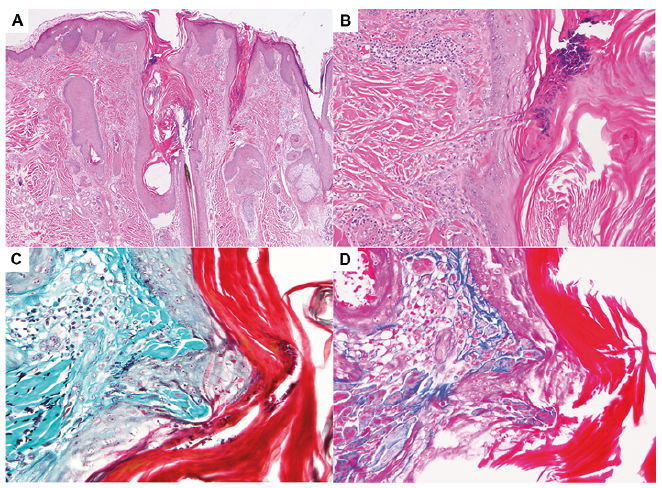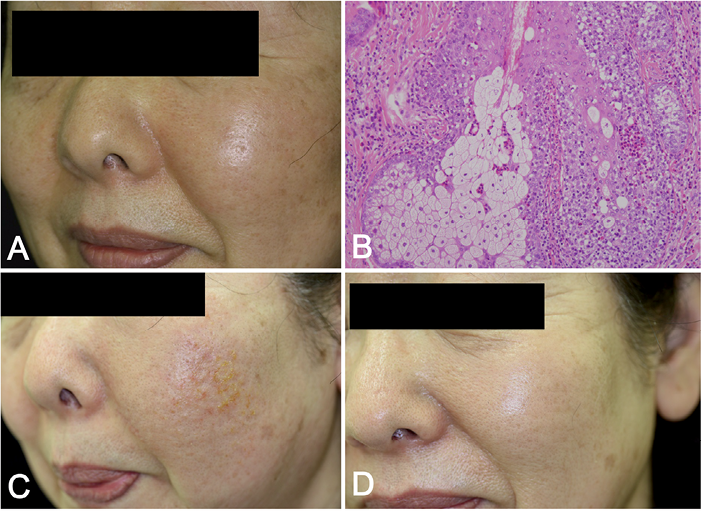Folliculitis, often abbreviated as FCT, is a common skin condition that affects hair follicles. It occurs when these follicles become inflamed or infected, leading to redness, swelling, and discomfort. While it may seem like a minor issue, understanding its causes, symptoms, and treatment options can help individuals manage the condition effectively and prevent complications. This article delves into the details of this skin condition, offering insights into its origins, how it manifests, and the best ways to address it.

What Is Folliculitis?
Folliculitis refers to the inflammation of one or more hair follicles. Hair follicles are tiny structures in the skin where hair grows. When these follicles become irritated or infected, they can develop small, red bumps or pustules. These bumps may resemble acne and can appear anywhere on the body where hair grows, including the scalp, face, arms, legs, and buttocks.
The severity of folliculitis can vary. In some cases, it may resolve on its own without treatment, while in others, it can persist and lead to more serious complications if left untreated. Understanding the underlying causes and recognizing the symptoms early can make a significant difference in managing this condition.
Causes of Folliculitis
Folliculitis occurs when hair follicles are damaged, allowing bacteria or other microorganisms to enter and cause an infection. Several factors can contribute to this damage, including:
- Bacterial Infections: One of the most common causes of folliculitis is an infection caused by Staphylococcus aureus, a type of bacteria that naturally lives on the skin. When the skin is broken or irritated, these bacteria can invade the hair follicles.
- Fungal Infections: Certain types of fungi, such as yeast, can also infect hair follicles, leading to a condition known as fungal folliculitis. This is more common in areas with high humidity or among individuals with weakened immune systems.
- Viral Infections: Some viral infections, such as herpes simplex, can affect hair follicles and result in inflammation.
- Razor Bumps: Shaving or waxing can irritate the skin and cause ingrown hairs, which may lead to folliculitis. This is particularly common in areas like the face, neck, and bikini line.
- Tight Clothing: Wearing tight clothing or using equipment that rubs against the skin can irritate hair follicles and increase the risk of developing folliculitis.
- Sweat and Moisture: Excessive sweating or prolonged exposure to moisture, such as from wearing wet clothes or swimming, can create an environment where bacteria thrive, increasing the likelihood of folliculitis.
- Weakened Immune System: Individuals with conditions that weaken the immune system, such as diabetes or HIV, are more susceptible to folliculitis because their bodies are less able to fight off infections.
Types of Folliculitis
There are several types of folliculitis, each with its own specific characteristics:
- Superficial Folliculitis: This type affects the upper part of the hair follicle and is often caused by bacterial infections. It typically results in small, white-headed pimples around the hair follicles.
- Deep Folliculitis: As the name suggests, this form affects deeper parts of the hair follicle and is usually more severe. It can cause larger, painful lumps and may lead to scarring.
- Hot Tub Folliculitis: This type is caused by exposure to contaminated water, often in hot tubs or swimming pools. It is typically caused by a bacterium called Pseudomonas aeruginosa.
- Eosinophilic Folliculitis: This rare form is often associated with conditions like HIV and is characterized by recurring patches of itchy, inflamed bumps.
Symptoms of Folliculitis
The symptoms of folliculitis can vary depending on the type and severity of the condition. However, some common signs include:
- Small Red Bumps: These bumps often appear around hair follicles and may have a white tip, resembling a pimple.
- Pus-Filled Blisters: In some cases, the bumps may contain pus, making them look like small blisters.
- Itching or Burning Sensation: The affected area may feel itchy or have a burning sensation, especially if the condition is widespread.
- Pain or Tenderness: Deep folliculitis can cause pain or tenderness in the affected area, particularly if the infection has spread.
- Crusting or Scabbing: In severe cases, the bumps may burst, leading to crusting or scabbing on the skin.
- Skin Discoloration: After the condition heals, the affected area may temporarily appear darker or lighter than the surrounding skin.
When to See a Doctor
While mild cases of folliculitis may resolve on their own, there are certain situations where medical attention is necessary. These include:
- If the condition does not improve after a few days of home care.
- If the bumps become increasingly painful, swollen, or filled with pus.
- If the affected area spreads or develops large, painful lumps.
- If you experience fever or other systemic symptoms, which could indicate a more serious infection.
Treatment Options for Folliculitis
Treatment for folliculitis depends on the underlying cause and the severity of the condition. In many cases, simple home remedies and over-the-counter treatments are sufficient to alleviate symptoms. However, more severe or persistent cases may require prescription medications or professional interventions.
Home Remedies and Self-Care
For mild cases of folliculitis, the following self-care measures can be effective:
- Warm Compresses: Applying a warm, damp cloth to the affected area can help reduce pain and encourage drainage of any pus-filled bumps.
- Good Hygiene Practices: Keeping the skin clean and dry can prevent further irritation and reduce the risk of infection. Avoid sharing towels, razors, or other personal items that may harbor bacteria.
- Avoid Irritants: Refrain from using harsh soaps, lotions, or chemicals that may irritate the skin. Opt for gentle, fragrance-free products instead.
- Loose Clothing: Wearing loose-fitting clothing can reduce friction and irritation on the skin, especially in areas prone to folliculitis.
- Shaving Carefully: If shaving is necessary, use a clean razor and shave in the direction of hair growth to minimize the risk of ingrown hairs.
Over-the-Counter Treatments
Several over-the-counter products can help manage folliculitis:
- Antibacterial Washes: Cleansers containing benzoyl peroxide or chlorhexidine can help kill bacteria on the skin and reduce inflammation.
- Topical Antibiotics: Creams or ointments containing antibiotics like neomycin can be applied directly to the affected area to treat bacterial infections.
- Anti-Itch Creams: Hydrocortisone cream or other anti-itch products can provide relief from itching and discomfort.
Prescription Medications
In cases where folliculitis is severe or does not respond to over-the-counter treatments, a doctor may prescribe stronger medications:
- Oral Antibiotics: For widespread or deep folliculitis, oral antibiotics may be necessary to eliminate the infection.
- Antifungal Medications: If the condition is caused by a fungal infection, antifungal creams or oral medications may be prescribed.
- Steroid Creams: In cases of significant inflammation, a doctor may recommend a topical steroid to reduce swelling and redness.
Professional Procedures
In rare cases, additional procedures may be required to address folliculitis:
- Laser Hair Removal: For individuals with recurrent folliculitis, laser hair removal can reduce the number of hair follicles and minimize the risk of future outbreaks.
- Drainage of Abscesses: If large, painful abscesses form, a healthcare provider may need to drain them to relieve pressure and promote healing.
Preventing Folliculitis
While it may not always be possible to prevent folliculitis, certain measures can significantly reduce the risk of developing the condition:
- Maintain Good Hygiene: Regularly wash your skin with mild soap and water, especially after sweating or exposure to potentially contaminated environments.
- Avoid Sharing Personal Items: Do not share razors, towels, or clothing with others, as this can spread bacteria or fungi.
- Shower After Swimming: Rinse off thoroughly after swimming in pools, hot tubs, or natural bodies of water to remove any potential contaminants.
- Moisturize Properly: Use non-comedogenic moisturizers to keep your skin hydrated without clogging pores.
- Monitor Your Health: If you have a condition that weakens your immune system, work closely with your healthcare provider to manage it effectively and reduce your risk of infections.





